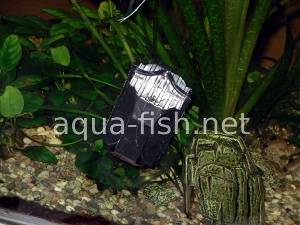How and why to clean glass of an aquarium
Introduction
Anyone involved in any way in keeping fish, is well aware of the dilemma faced every few months as the amount of foreign bodies that fish and plants generate begins to mount up. The dilemma is whether to empty the tank completely, place the fish in a quarantine tank, and give the main tank a thorough cleaning inside and out.
This seems like the easy way, yet an experienced aquarist will do just about everything possible to avoid doing it. Why? Not because they are lazy, but because if they do so they will more or less lose all the colonies of beneficial bacteria that has accumulated in the tank water. Another reason is that for the fish themselves, it is traumatic and cause fairly significant health problems, no matter the short their stay in their temporary accommodation.
So the dedicated aquarium operator or owner every now and then, as part of an annual maintenance program, will roll up their sleeves and give the aquarium a thorough cleaning both outside and inside. Cleaning the tank on the outside, as you can imagine, is fairly straightforward. When it comes to cleaning the lid of the tank, a little extra care is required to make sure that no potentially harmful chemicals in the detergent or chlorine from the tap water used in the cleaning remains on the surface. Sounds fairly straightforward? It is.
Picture of an aquarium glass cleaner - Magnetic pad
It’s only when you begin to start cleaning the inside of the tank that the complications can begin. To be honest, over the last few years, cleaning the inside of an aquarium has become much less of a nightmare than it once was.
The many companies who design and produce equipment for aquarium cleaning have come up with some fairly innovative ideas to make the job cleaner, drier and quicker for the person assigned to the task of being aquarium glass cleaner and less traumatic for the fish themselves.
Having go that important piece of information out of the way, the next step is to bring in the specialist tools to clean the interior sides of the tank, and there are a few.
The first are specialist pads or scrapers used to remove algae from the sides of the tank. In any action involved in cleaning the interior sides of the tank you basically have three options.
- Use a long handled brush. Might save you from getting too wet but is not too effective.
- Use a magnetized pad. This is becoming the most popular option as it is the most user friendly type of aquarium glass cleaner. That applies only on the condition that the glass does not need to be scrubbed as it is very difficult to build up any kind of friction using magnetized cleaning pads. One side of the pad is placed on the exterior of the glass and the other on the interior. The pad is then moved around, controlled from the outside while the cleaning is done from the inside. To get the best use out of magnetic cleaning pads, the tank should never be allowed to get too dirty. On the upside these pads are really easy to use, so there is no reason not to clean the inside of the tank much more frequently.
- What once was the most common method of cleaning the interior sides of an aquarium was to stand on a chair or on a ladder, role up your sleeves to the very top and start to scrub! This must have been very traumatic for the fish, and not so much less for the aquarium glass cleaner. For this reason aquarium interior cleaning was carried out at intervals too far apart until the situation in the tank became unhealthy and no one on the outside could see if the fish were dead or alive.
For this reason magnetic pad cleaners have become increasingly popular in the aquarium world and have become the first choice for enthusiasts who want to provide a pleasant environment for their fish and an easier life for themselves.
A few examples of the many types of algae “float” magnet pads available online are listed below:
- The Algae Free Float Magnet: Algae Free are a company who manufacture a wide range of different sized magnet pads, designed to suit different glass thicknesses. Known for their durability, the interior pad is surfaced with Velcro to remove some of the more persistent surface pests.
- Magnavore Cleaning Magnet: Based on a similar design, the Magnavore is more suited to smaller aquariums with thinner glass.
These are just a couple of example of the many specialist cleaning magnets that can be bought online and have made aquarium glass cleaning a simpler task.

